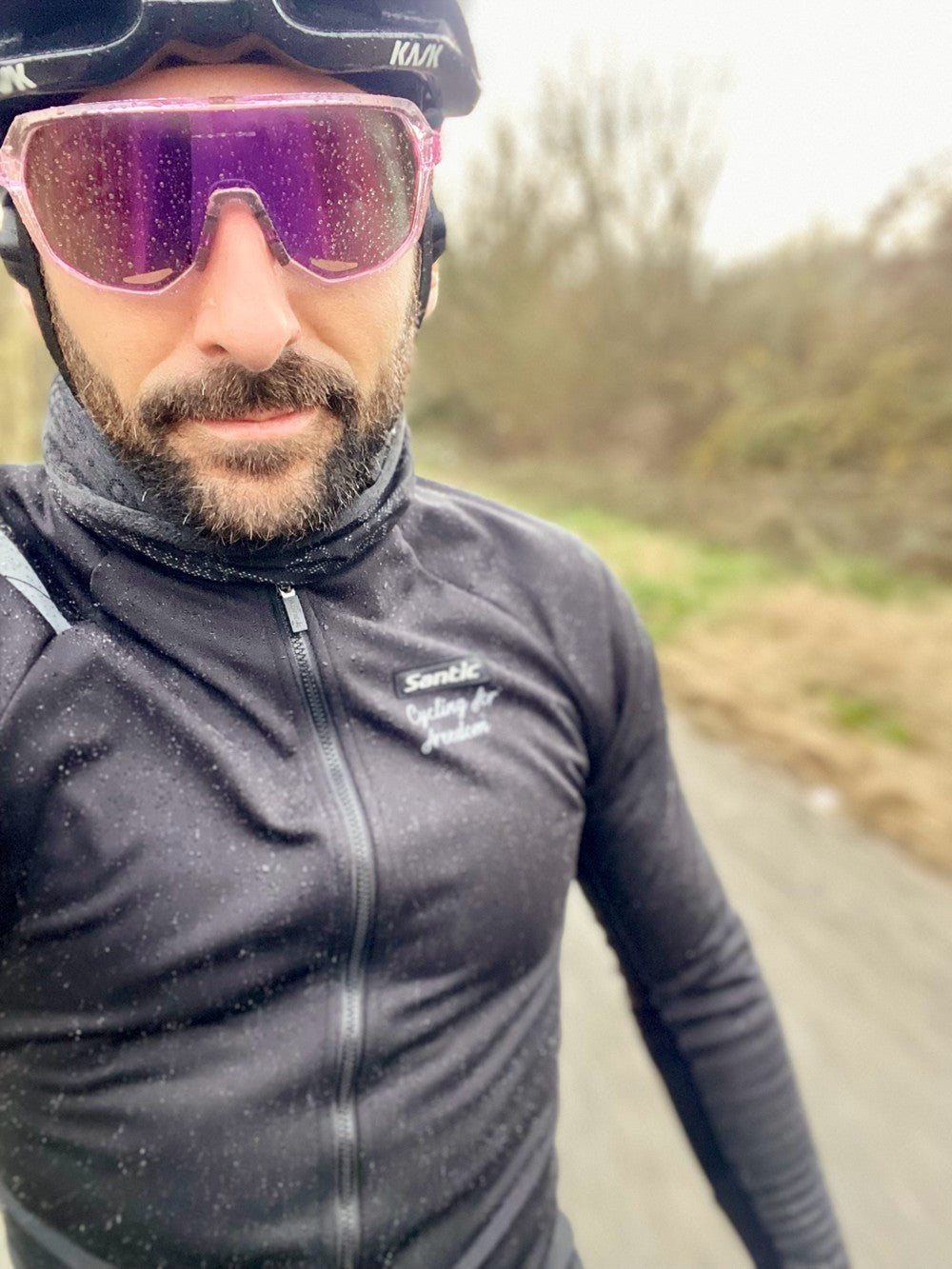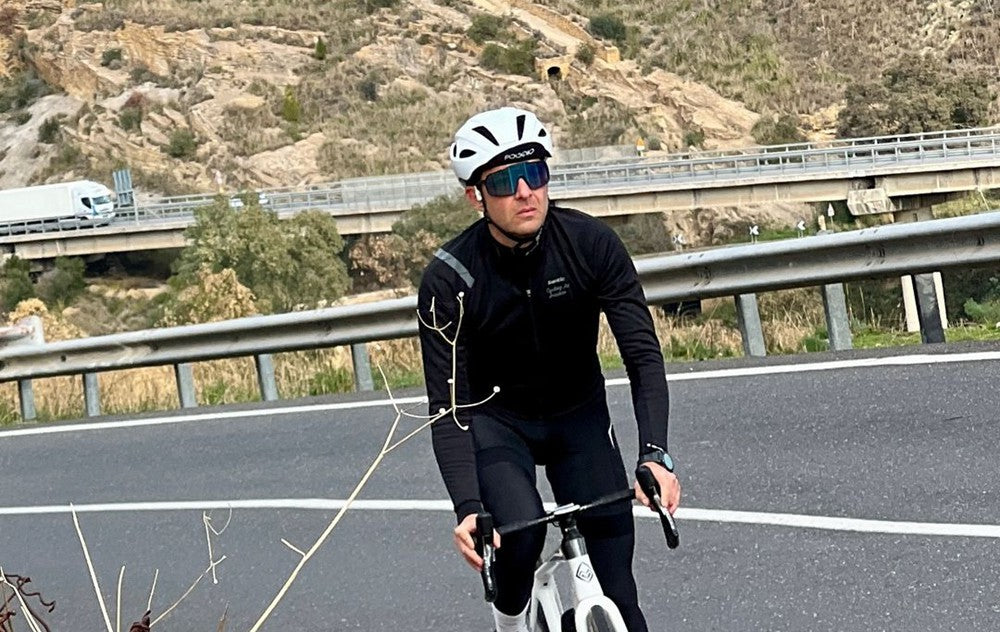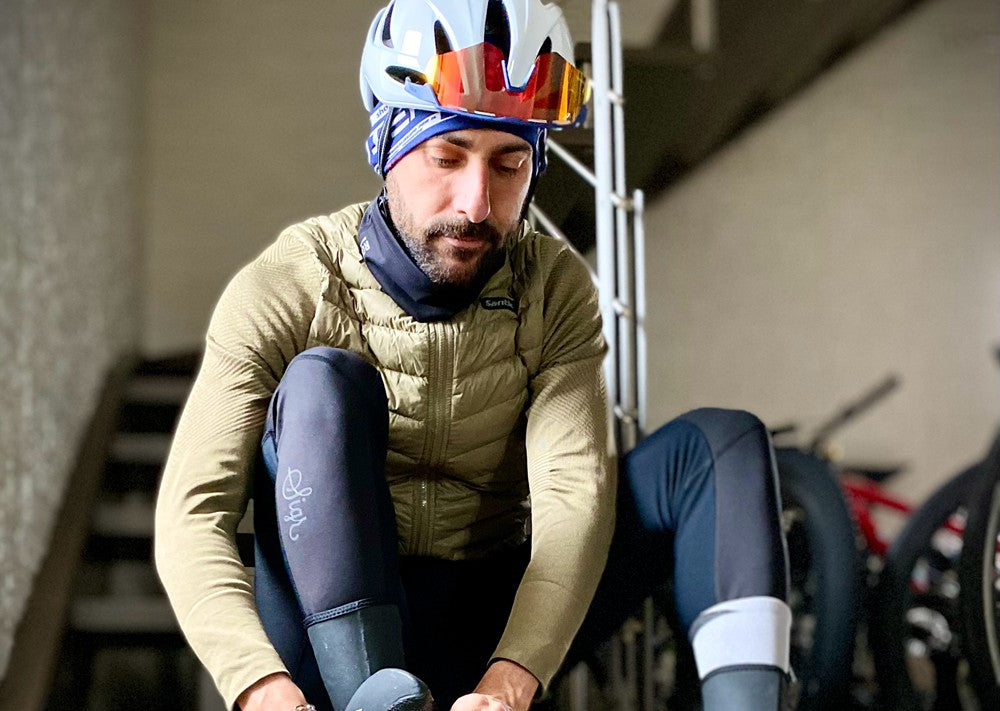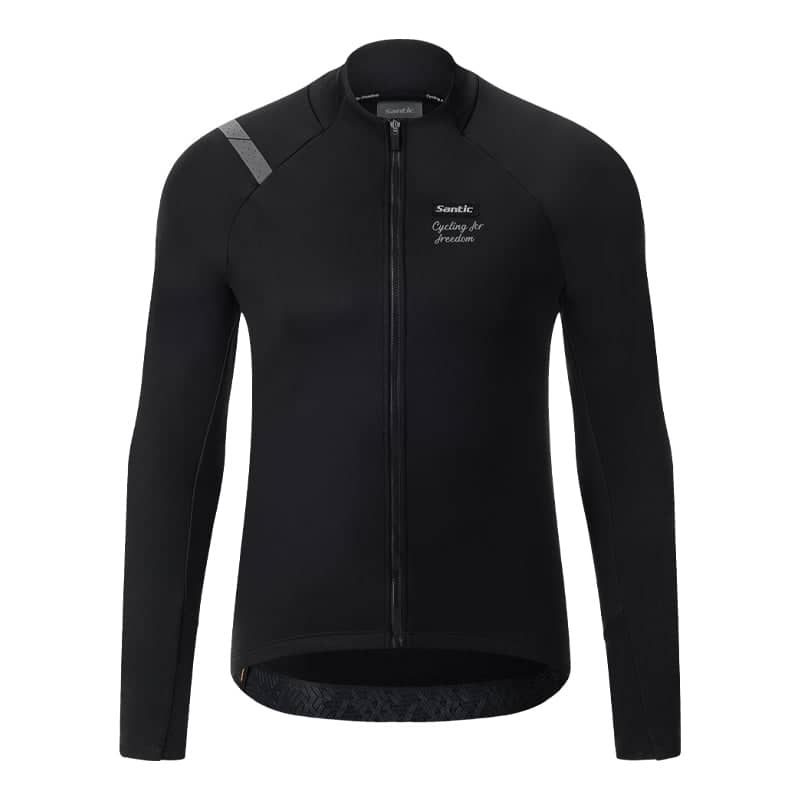Maximizing Enjoyment in Cycling Sport: A Comprehensive Guide
Cycling captivates your mind, strengthens your body, and nourishes your soul. Whether you are a recreational rider looking for adventure or a competitive cyclist chasing podiums, the growth of cycling invites you to elevate your experience.
Let this guide show you how to discover euphoric rides by choosing an ideal bike, honing techniques, utilizing smart tech, and extracting pure joy from every pedal stroke. It is time to shift into gear and experience the rush of optimized cycling.
Choosing the Right Bike
At its essence, a bicycle is a simple machine that converts human power into motion through pedals, gears, and wheels. Yet the cycling world contains a diverse array of bike types and options. A basic understanding of the main categories will equip you to select the optimal bike for your riding enjoyment.
Road bikes
Road bikes are for speed and efficiency on paved surfaces. They have lightweight frames, skinny tires, and dropped handlebars to reduce wind resistance. The geometry and components enable an aerodynamic, forward-leaning riding style that generates power through the pedals. From brisk fitness rides to intense racing, road bikes excel when distance, pace, and agile handling are priorities.
Mountain bikes
Mountain bikes are for off-road adventures. They have sturdy, suspension-equipped frames and wide, knobby tires to handle uneven terrain and obstacles. Flat handlebars allow an upright stance for better control on steep slopes. Durable components withstand the impacts of hardcore trails. While heavier than road bikes, mountain bikes unlock the freedom to explore a rugged backcountry.
Hybrid bikes
Hybrid bikes strike a versatile balance between road and mountain bikes. They blend lighter frames with wider tires for stability across varied conditions. Flat handlebars provide an upright position well-suited for recreational rides and commuting. Hybrids also often have mounts for cargo racks to haul gear. With comfort and adaptability, hybrids open cycling to more people and purposes.
Cruiser bikes
Cruisers offer a relaxed, comfortable cycling experience. Their sweeping handlebars allow an ultra-upright stance requiring minimal body bend. Big cushioned seats and wide tires smooth out bumps for leisurely riding. From beach cruising to laid-back neighborhood jaunts, cruisers let you meander and enjoy the ride.

HOW TO CHOOSE THE RIGHT BIKE ?
Now, let us explore the key considerations for choosing a bike to maximize your cycling enjoyment.
Ride intentions
The first decision is to match the bike type with your intended riding style. Know whether you want long road rides, technical mountain biking, casual neighborhood cruising, or multi-surface versatility. It establishes the overall bike characteristics to meet your needs.
Body size
Sizing is critical so your bike fits properly and feels natural when riding. Consult sizing charts based on your height, inseam, and other measurements. When test riding, look for a frame where you can stand flat-footed yet have a slight bend in your knee at the lowest pedal. Reach should be comfortable without overstretching. Remember that adding a longer or higher stem can fine-tune the fit. Feel free to swap components until the size feels dialed.
Safety features
For maximum enjoyment, consider splurging on key features. You can find lightweight materials like carbon fiber to boost speed and handling while absorbing shock. A smooth-shifting drivetrain with extra gears allows you to find your ideal cadence. Durable brakes give control for confident stopping. Cushioned saddle, grippy pedals, adjustable stem—creature comforts enhance the ride. Prioritize components that overcome pain points so you stay energized mile after mile.

EssEssential Cycling Skills
Mastering key techniques and abilities will unlock greater enjoyment, performance, and safety as a cyclist. While riding a bike is second nature once learned, refining your skills takes practice. Here are essential techniques to boost your cycling.
Balance
Balance is paramount for controlling your bicycle. Keeping equilibrium while navigating variable terrain and speeds comes through developing your body's natural coordination. Practice track standing, riding one-handed, and doing slow-speed maneuvers to hone balance. Staying centered over the pedals will keep the bike steady beneath you.
Good pedaling
Efficient pedaling derives power from using the entire pedal stroke. Pull up with one foot as you push down with the other to generate constant force. Pedal in circles instead of just mashing down. Clipless pedals that attach to your shoes allow for full rotation and maximize energy transfer. Smooth pedaling will help you ride faster and further.
Gears
Shifting gears appropriately maintains momentum on changing inclines. Use your chainrings and rear cogs to find an optimal cadence as you tackle flats, hills, and declines. Shift your front chainring for large jumps between high and low gear ratios. Use the rear derailleur for fine-tuning small gear adjustments. Avoid cross-chaining between extremes.
Braking
Braking may seem simple, but controlling speed safely takes finesse. Grip both levers to scrub speed evenly front and rear. Shift your weight back and lighten your grip to avoid going over the bars. For wet conditions, brake earlier and gentler to retain tire traction. Utilize both brakes so you can stop when needed.
Cornering
Confident cornering lets you carry speed through turns. Lean gently into curves by angling the knee and elbow inward. Look through the exit and use your core to weighted distribution; don't brake through the turn. Start wide, then carve close to the apex. Practice tight cornering to handle technical singletrack or swift descending switchbacks.
Ride out of the saddle
Climbing minimizes wasted energy on ascents. Shift into a light gear and aim for a quick cadence of around 70-80rpm. Stand up periodically to give muscles relief while keeping momentum. Lean over handlebars, keeping weight centered on the bike. Breathe deeply and maintain a steady tempo to sustain strength on long climbs.
Bring along spare parts
Fixing a flat gets you back on the road. Always take a spare tube, tire levers, and mini pump/CO2 inflator. Locate the puncture by running a finger inside the tire. Remove the tube and insert a new one; be cautious not to pinch it. Inflate gradually, then check for even seating within the rim before adding pressure. Replace the tire and inflate fully to resume your ride.
Practice makes perfect when honing essential cycling skills. As your technique improves, your rides will become more fluid and fun.

The Rise of Smart Bikes
Technology transforms cycling, unlocking new performance, motivation, and adventure possibilities. From data-driven training tools to immersive digital experiences, smart innovations engage and empower today's cyclists. The key technologies enhancing this sport:
GPS
Cycling computers and GPS devices provide navigation, tracking, and ride performance insights. Devices like Garmin's Edge series use satellite data to map routes anywhere while tracking speed, distance, and elevation. Sensors can capture advanced metrics like heart rate, power output, and VO2 max for dialed training. Turn-by-turn navigation prompts help cyclists stick to planned routes. Data gets uploaded for post-ride analysis.
Real-time data
Pedal-based power meters have surged in popularity for training. Systems like Vector 3 attach to crank arms to measure wattage output with each pedal stroke precisely. Cyclists use power data to structure interval workouts that target strength and endurance gains. Seeing real-time output also helps pacing on challenging climbs or sprint segments. It's a numbers-driven approach to improvement.
Indoor training
Smart trainers add high-tech realism to indoor riding. Connected trainers from Tacx, Wahoo, and others sync with virtual riding platforms like Zwift to simulate real-world resistance. As the on-screen terrain shifts, the trainer adjusts resistance to match. Riders feel each incline and decline. Some trainers feature video simulations for an immersive experience. Upgrading your trainer can keep indoor training engaging.
Cycling apps
Cycling apps boost motivation and camaraderie. Strava is popular for its segment leaderboards that let cyclists compare times on mapped routes against each other. Earn medals and kudos for mileage goals. Apps like Sufferfest gamify training with worlds to explore and reactive courses. Join group rides and races to enjoy community with cyclists worldwide. Make indoor or solo riding fun.
Smart technology integration
Smart bikes integrate technology for an optimized experience. The Specialized Tarmac SL7 has an integrated power meter, computer, and lighting. VanMoof e-bikes provide touchscreen navigation and anti-theft tracking. The Cowboy e-bike offers a sleek app-based display. As hardware shrinks, connectivity and data in bikes provide seamless riding.
Custom settings
Personalization takes the guesswork out of gear selection. Drivetrain brand SRAM offers an eTap mobile app to customize shifting settings based on your preferences and terrain. Suspension tuning apps from RockShox allow tweaking compression and rebound for trail conditions. Dial in the perfect feel.
As smart cycling innovations expand, technology can make riding more engaging on any terrain. Tracking performance metrics provides a structure for targeted training. Cycling in the digital age awakens new motivation to maximize your potential on two wheels.

Tips for a Fun Cycling Trip
A well-crafted cycling adventure makes memories that last a lifetime. Whether touring for days across stunning scenery or taking a recreational ride to see sights, proper planning ensures an enjoyable journey. Use these tips when organizing your next cycling trip.
Set realistic goals
Match the trip distance and terrain to riders' abilities. Be cautious about the average mileage and elevation gain that you can handle. Challenge fitness levels slightly, but avoid overextending stamina. Plan alternate bailout points along the route to shorten days if needed. Allow more time and mileage for less experienced riders to build conditioning.
Plan the routes
Vet routes thoroughly through topographic maps, satellite imagery, and riding apps. Look for highly scenic roads and trails to experience the area's natural beauty. Search for smooth pavement or graded dirt trails to match the bikes. Confirm the distance and elevation profile. Ride segments virtually using apps like RideWithGPS to preview the course.
Take breaks
Schedule stops every 15-20 miles at picturesque spots for regrouping, snacking, and taking photos. Historic landmarks, sweeping vista points, and shady parks make great break locations. Carry plenty of snacks and hydration to refuel during stops. Keep spirits high by relaxing there before tackling the next segment.
Combine activities
Research interesting sights and activities along the route or at overnight towns. Museums, farmers' markets, and local eateries showcase regional culture. Take time off the bikes for hiking, swimming, and exploring highlights so the trip includes variety. Mixing activities prevents burnout while creating shared memories.
Book spaces for rest
Select accommodations ideal for cyclists. Hotels near riding routes simplify logistics, and amenities like pools, laundry, and hot breakfasts aid recovery. Seek secure bike storage like lockable garages. Extended-stay options with kitchen access provide flexibility for meals. Pick lodging to maximize relaxation on multi-day trips.

Be flexible
Use a mapped route, but allow adjustments each day. Rides rarely follow the exact planned course. Detours pop up. The group may vote to shorten or extend a day. Maintain a willingness to adjust the itinerary based on weather, energy levels, breakdowns, or new opportunities discovered along the way.
Set your gears ready
Remember to pack layers, rain gear, tools, and nutrition essentials. Mountain weather fluctuates wildly, so carry apparel for hot, cold, dry, and wet conditions. Bring a multi-tool, tubes, and mini-pump for mechanical issues. You can stock energy bars, electrolyte mixes, and recovery drinks to stay fueled. A handlebar bag or saddle pack provides easy access to the bike.
Keep a positive attitude
Maintain an affirmative attitude through challenges encountered. Appreciate each day's highlights despite sore muscles and mechanical or weather delays. Focus conversations on the day's triumphs and comedy rather than complaints. Laughter is the best medicine. Staying upbeat lifts spirits when adversity strikes.
Ride with others
Draft a buddy plan and designate ride leaders. Assign riding partners to look out for each other during the trip. Select a lead rider to set the pace and navigate. Choose a sweep to keep the rear group in sight. Establish protocols so the group stays safe if separated.
Carry light
Travel light to keep bikes nimble on undulating terrain. Take only essential clothing that layers and washes easily. Limit personal items to keep panniers light. Carry camping gear only if fully committed to roughing it. Shedding excess weight improves handling, acceleration, and stamina when riding long days over changing gradients. Well-packed bikes maintain responsiveness and efficiency to enhance enjoyment over extended distances.
By mixing preparation with flexibility, your cycling trip will create priceless shared adventures. Use these tips to craft an itinerary tailored to your interests and abilities.

Conclusion
Cycling is a lifestyle that brings joy, adventure, and meaningful connections. Though the technical aspects of bikes and skills are important, what matters most is nurturing your passion for being on two wheels. Let cycling positively impact your life as it has for so many others.
Related Articles
【Best Bike Tool Kits】
https://santic.com/blogs/extra/best-bike-tool-kits
【How to Clean A Mountain Bike】
https://santic.com/blogs/extra/mountain-bike-clean


